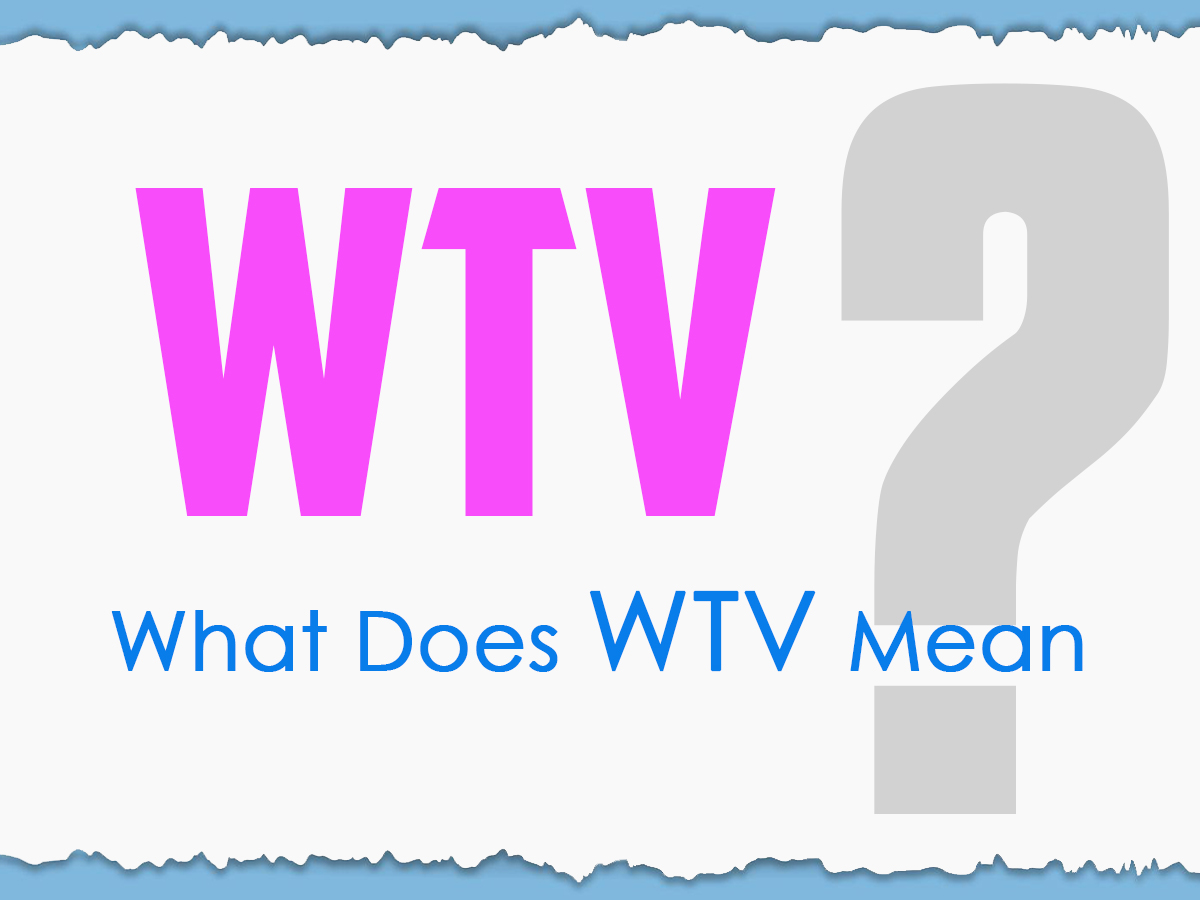Among the myriad of acronyms used in online conversations, “WTV” stands out. But what does WTV mean exactly? In this comprehensive guide, we delve deep into the meaning, usage, and significance of this term, providing clarity for those who may be puzzled by its presence. Join us as we unravel the mystery behind WTV and gain a deeper understanding of its role in modern communication.
What Does WTV Mean?
Ever encountered the abbreviation “WTV” in text messages, social media posts, or online forums and found yourself perplexed? Fear not! “WTV” stands for “Whatever.” It’s a casual expression often used to convey indifference, nonchalance, or a lack of concern regarding a particular matter. Originating from internet slang, WTV has seamlessly integrated into digital communication, offering a succinct way to express a laid-back attitude.
Exploring the Origins
The term “WTV” emerged from the need for brevity and convenience in online conversations. As digital communication platforms flourished, users sought efficient ways to convey their thoughts and emotions. Thus, abbreviations like WTV gained popularity due to their simplicity and universality across various online contexts.
Read More: What Does MK Mean Texting
Usage in Context
In practice, WTV is employed in diverse situations where an individual wishes to express a dismissive or unconcerned attitude. Whether discussing trivial matters, making light-hearted remarks, or responding casually to inquiries, this acronym serves as a versatile tool for communication. Its informal nature fosters a relaxed atmosphere in online interactions, enabling users to engage effortlessly.
Significance in Communication
Despite its seemingly casual demeanor, WTV plays a significant role in digital communication. It encapsulates the essence of informality and spontaneity, allowing individuals to communicate authentically in online spaces. By embracing expressions like WTV, users contribute to the evolution of language and foster a sense of camaraderie within virtual communities.
Understanding the Context
To grasp the meaning of WTV fully, it’s essential to consider the context in which it’s used. While the acronym itself denotes indifference or nonchalance, its interpretation may vary based on the surrounding conversation. Contextual cues, such as tone, body language (in face-to-face communication), or preceding dialogue, provide insights into the intended meaning behind WTV.
Contextual Examples
- Text Messaging:
- Person A: “Are you joining us for dinner tonight?”
- Person B: “WTV, I’m not really hungry.”
- Social Media Comment:
- User 1: “I can’t believe they canceled the event!”
- User 2: “WTV, we can find something else to do.”
- Online Forum Discussion:
- Participant 1: “I think we should choose option A for the project.”
- Participant 2: “WTV, either option works for me.”
Usage in Texting and Social Media
In the realm of texting and social media, where brevity and efficiency are prized, abbreviations like “WTV” have become commonplace. You might encounter this abbreviation in various contexts, such as:
- Text Conversations: When discussing plans or making decisions, someone might respond with “WTV” to indicate that they are indifferent or flexible about the outcome.
- Social Media Comments: On platforms like Twitter, Facebook, or Instagram, users might use “WTV” as a quick response to a post or comment that they find unimportant or trivial.
- Online Forums and Chatrooms: In online communities where informal language reigns supreme, “WTV” might be used liberally to express a lack of concern or interest in a topic under discussion.
Variations and Synonyms
While “WTV” is the most common abbreviation for “Whatever,” there are several variations and synonyms that convey a similar sentiment. Some alternatives include:
- IDC (“I Don’t Care”)
- IDK (“I Don’t Know”)
- Meh (an expression of indifference or apathy)
- NVM (“Never Mind”)
These variations might be used interchangeably depending on the context and the personal preference of the speaker.
Common Usage of WTV
WTV finds its way into countless online interactions daily, reflecting its status as a staple in internet vernacular. It’s often employed in scenarios where individuals wish to downplay the importance of a topic, express disinterest, or signal a willingness to defer to others’ preferences.
In informal settings, such as texting, gaming communities, and social media platforms, WTV serves as a convenient shorthand for conveying a lack of investment in the conversation or topic at hand. Its brevity and immediacy make it well-suited for rapid-fire exchanges characteristic of online communication.
Read More: What’s the Present Continuous Tense in Grammar?
Impact of WTV on Digital Discourse
While some may dismiss WTV and similar abbreviations as mere frivolities of internet culture, they play a more significant role in shaping digital discourse than meets the eye. These shortcuts not only streamline communication but also reflect evolving linguistic trends and cultural norms in the digital age.
WTV exemplifies the fusion of language and technology, highlighting the dynamic nature of communication in the internet era. Its widespread adoption underscores the importance of adaptability and conciseness in online interactions.
Conclusion
In conclusion, “WTV” serves as a versatile expression in modern communication, encapsulating a sense of nonchalance and informality. By understanding its meaning, usage, and significance, individuals can navigate online interactions with ease and authenticity. Embrace the evolution of language, and don’t hesitate to sprinkle a bit of WTV into your digital conversations!
Frequently Asked Questions (FAQs) about WTV:
What’s the origin of the term WTV?
The acronym WTV originated from internet slang, evolving as a shorthand expression for “Whatever.”
Is WTV considered formal or informal language?
WTV is predominantly used in informal contexts, such as text messages, social media, and casual conversations.
Can WTV be perceived as rude?
While WTV may appear dismissive to some, its interpretation largely depends on the context and relationship between communicators.

